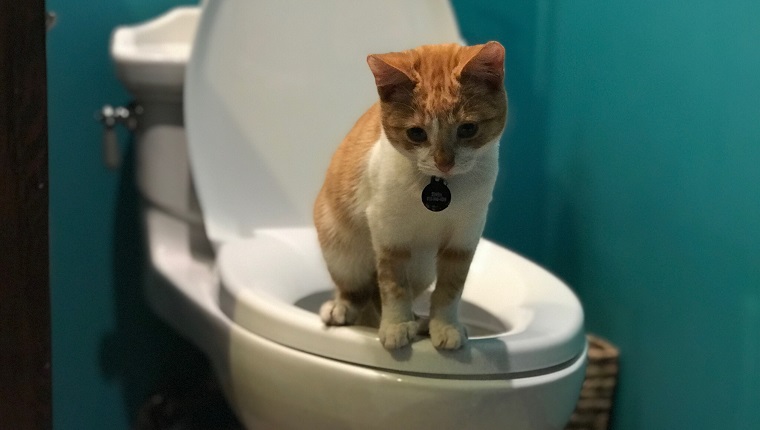Do you find yourself on the lookout for advise concerning Don’t flush cat feces down the toilet?

Introduction
As cat owners, it's important to bear in mind how we throw away our feline close friends' waste. While it may seem convenient to purge pet cat poop down the toilet, this technique can have damaging consequences for both the setting and human health and wellness.
Environmental Impact
Purging cat poop introduces unsafe microorganisms and bloodsuckers right into the water supply, presenting a considerable threat to aquatic ecosystems. These pollutants can adversely influence aquatic life and compromise water quality.
Wellness Risks
Along with ecological concerns, flushing pet cat waste can also pose health and wellness risks to people. Pet cat feces may contain Toxoplasma gondii, a bloodsucker that can cause toxoplasmosis-- a potentially serious disease, especially for pregnant ladies and individuals with damaged body immune systems.
Alternatives to Flushing
The good news is, there are much safer and much more accountable ways to deal with pet cat poop. Think about the complying with choices:
1. Scoop and Dispose in Trash
One of the most usual method of taking care of cat poop is to scoop it right into a naturally degradable bag and toss it in the trash. Make certain to use a committed litter scoop and dispose of the waste immediately.
2. Use Biodegradable Litter
Go with eco-friendly pet cat clutter made from materials such as corn or wheat. These litters are environmentally friendly and can be safely gotten rid of in the trash.
3. Bury in the Yard
If you have a lawn, consider burying pet cat waste in a designated location far from veggie gardens and water sources. Make sure to dig deep sufficient to prevent contamination of groundwater.
4. Mount a Pet Waste Disposal System
Invest in a pet garbage disposal system especially developed for cat waste. These systems use enzymes to break down the waste, decreasing odor and ecological influence.
Final thought
Accountable family pet ownership prolongs beyond giving food and sanctuary-- it additionally involves appropriate waste monitoring. By avoiding flushing cat poop down the bathroom and choosing alternative disposal approaches, we can lessen our ecological footprint and secure human health and wellness.
Why Can’t I Flush Cat Poop?
It Spreads a Parasite
Cats are frequently infected with a parasite called toxoplasma gondii. The parasite causes an infection called toxoplasmosis. It is usually harmless to cats. The parasite only uses cat poop as a host for its eggs. Otherwise, the cat’s immune system usually keeps the infection at low enough levels to maintain its own health. But it does not stop the develop of eggs. These eggs are tiny and surprisingly tough. They may survive for a year before they begin to grow. But that’s the problem.
Our wastewater system is not designed to deal with toxoplasmosis eggs. Instead, most eggs will flush from your toilet into sewers and wastewater management plants. After the sewage is treated for many other harmful things in it, it is typically released into local rivers, lakes, or oceans. Here, the toxoplasmosis eggs can find new hosts, including starfish, crabs, otters, and many other wildlife. For many, this is a significant risk to their health. Toxoplasmosis can also end up infecting water sources that are important for agriculture, which means our deer, pigs, and sheep can get infected too.
Is There Risk to Humans?
There can be a risk to human life from flushing cat poop down the toilet. If you do so, the parasites from your cat’s poop can end up in shellfish, game animals, or livestock. If this meat is then served raw or undercooked, the people who eat it can get sick.
In fact, according to the CDC, 40 million people in the United States are infected with toxoplasma gondii. They get it from exposure to infected seafood, or from some kind of cat poop contamination, like drinking from a stream that is contaminated or touching anything that has come into contact with cat poop. That includes just cleaning a cat litter box.
Most people who get infected with these parasites will not develop any symptoms. However, for pregnant women or for those with compromised immune systems, the parasite can cause severe health problems.
How to Handle Cat Poop
The best way to handle cat poop is actually to clean the box more often. The eggs that the parasite sheds will not become active until one to five days after the cat poops. That means that if you clean daily, you’re much less likely to come into direct contact with infectious eggs.
That said, always dispose of cat poop in the garbage and not down the toilet. Wash your hands before and after you clean the litter box, and bring the bag of poop right outside to your garbage bins.
https://trenchlesssolutionsusa.com/why-cant-i-flush-cat-poop/

We hope you enjoyed our topic about How to Dispose of Cat Poop and Litter Without Plastic Bags. Thanks so much for spending some time to read our blog post. Do you know another person who is interested by the topic? Be sure share it. We thank you for reading our article about Can You Flush Cat Poop Down The Toilet?.
Suggested Site